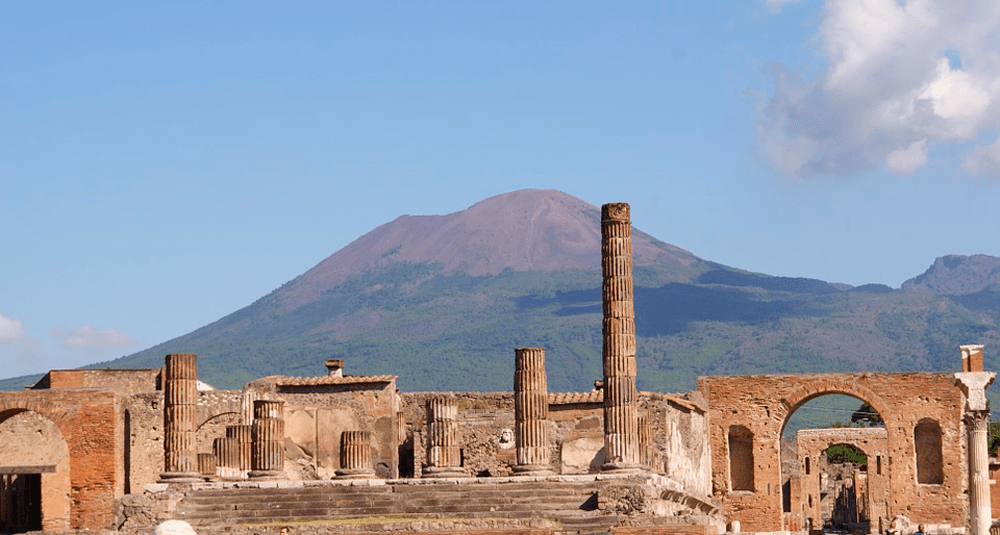The eruption of which volcano destroyed the city of Pompeii?
Last Updated:
Pompeii, a flourishing city of the Roman Empire in the Campania region, was destroyed in 79 AD by the catastrophic eruption of Mount Vesuvius. This active volcano, located some 9 kilometers from Pompeii, is one of the world’s most famous because of this historic tragedy.
Vesuvius’ eruption took the inhabitants of Pompeii by surprise, as they were unprepared for such an event. Previously, Vesuvius had been considered a mere mountain. But in August 79 AD, a violent explosion sent an immense column of ash, toxic gases and pumice into the atmosphere. These materials, carried away by the wind, fell back onto the city, forming a thick layer that covered Pompeii and its surroundings.
Within hours, the city was buried under several meters of volcanic ash. These deposits sealed buildings, streets and even inhabitants in their last moments of life. The extreme heat caused the rapid death of many inhabitants, while others perished trying to escape.
The eruption also destroyed other nearby towns, such as Herculaneum and Stabies, but Pompeii remains the most emblematic example due to the exceptional state of preservation of the city and the artifacts recovered.
The layer of ash played a protective role, preventing the decomposition of buildings, objects and even bodies. When Pompeii was rediscovered in the 18th century, archaeologists found a city frozen in time, offering invaluable evidence of daily life under the Roman Empire. Plaster casts made from the cavities left by the bodies of the victims in the ashes allow us to see their expressions and postures, making this tragedy all the more poignant.
Vesuvius is still an active volcano, although it last erupted significantly in 1944. It is closely monitored due to the high population density in the Naples area. Despite the risks, it remains a popular tourist destination, with many visitors climbing to its summit to admire the spectacular views and learn more about its history.
Today, Pompeii is one of the most visited archaeological sites in the world. The ruins, a UNESCO World Heritage Site, attract millions of tourists every year. Ongoing excavations continue to reveal new discoveries, enriching our understanding of Roman civilization.
The eruption of Mount Vesuvius in 79 AD transformed Pompeii into a unique testimony to ancient history, both tragic and fascinating.
You may also be interested in
history

The eruption of which volcano destroyed the city of Pompeii?
Answer
The devastating eruption of Mount Vesuvius in 79 A.D. buried the town of Pompeii under a thick layer of ash and lava, preserving it for centuries.